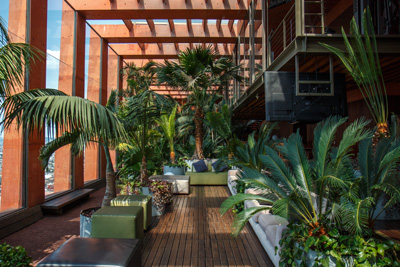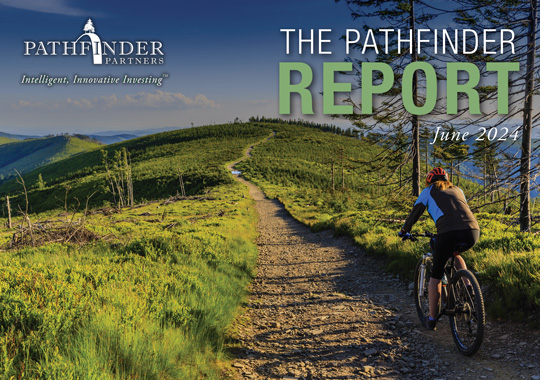Zeitgeist - News Highlights
Controlling Apartment Expenses While Creating New Revenue Streams
According to a recent Yardi Matrix analysis of 22,000 U.S. apartment properties, operating expenses rose 7.1% year-over-year, down from the peak increase of 8.7% in 2022. The Southeast led the nation with expense growth of 8.8% followed by the West (7.3%), Midwest (6.4%), Southwest (6.0%) and Northeast (4.7%). From 2019-2021, expense growth averaged 3.4%. Double digit rent growth in 2021 and 2022 softened the impact, but with near-term rent growth reverting to historical averages, elevated expenses are eroding net operating income at properties lacking proactive asset management.
The fastest growing expense in 2023 was property insurance, which rose 27.7%. Insurance companies have been increasing premiums in markets vulnerable to hurricanes, fires and floods due to high losses in recent years. Other expenses contributing to the trend include marketing (12.3%), administrative (9.6%) and repairs and maintenance (8.8%).
For property owners, mitigating expense growth requires a comprehensive and proactive management approach. To combat increases in insurance premiums, owners are digging deeper into their existing coverages. Sophisticated operators are shopping insurance coverage with multiple carriers (or consolidating carriers to achieve economies of scale) and modifying policy limits and deductibles to lower costs. To mitigate cost increases, operators are carefully analyzing the return on investment for any property improvements and focusing on tenant retention to reduce other costs like turnover, marketing and vacancy.
In addition to uncovering expense savings, landlords are focused on increasing revenue streams through initiatives like bulk internet, owner-sponsored renter insurance policies and revenue-sharing agreements with telecommunication providers. These initiatives often have a “win-win” element where the resident receives elevated services or cost savings and the landlord participates in a larger share of the upside by aggregating properties under a single service provider. In the current environment, the need for innovative and effective asset management is vital to success in apartment investing.
Wellness Amenities: An Emerging Apartment Trend
Integrating health and wellness features into multifamily housing is gaining popularity and reshaping how apartment communities are designed and experienced. The shift is being driven by Gen Z – the only renter-majority generation in the U.S. – and their increased awareness of well-being beyond physical fitness.
One of the key elements is the incorporation of amenities focused on holistic wellness, specifically mental health, and social gathering spaces that incorporate access to nature. In a recent poll by Core Health and Fitness, 59% of multifamily developers reported an increased demand for wellness amenities in their communities. Trends like Biophilic design – which emphasizes connection with nature using indoor plants, natural lighting, water features and fresh air – generated momentum during the Pandemic when indoor/outdoor spaces became important for safety reasons.
 One River North, a newly developed multifamily community in Denver, CO, is at the forefront of the Biophilic trend and includes a man-made “canyon” amenity running through the property with a river, greenery and open-air terraces. Existing apartment communities are also by adding amenities like Zen gardens, community vegetable gardens and outdoor lounge areas aimed at reducing stress.
One River North, a newly developed multifamily community in Denver, CO, is at the forefront of the Biophilic trend and includes a man-made “canyon” amenity running through the property with a river, greenery and open-air terraces. Existing apartment communities are also by adding amenities like Zen gardens, community vegetable gardens and outdoor lounge areas aimed at reducing stress.
Incorporating wellness elements is becoming essential at higher-end apartments targeting younger renters and the rest of the industry is taking note. At Pathfinder, we have long been advocates for developing a sense of community through outdoor gathering spaces, dog parks, community gardens and thoughtful landscaping. We expect to expand this approach in parallel with evolving renter preferences.
Share this Article
IN THIS ISSUE
PATHFINDER MULTIFAMILY OPPORTUNITY FUND IX, L.P.
Multifamily Opportunity / Value-Add Fund
CHARTING THE COURSE
What Schrödinger’s Cat Tells Us About Inflation and Interest Rates
FINDING YOUR PATH
Lessons from the WeWork Debacle
GUEST FEATURE
Real Estate Reimagined: A Surge in Apartment Conversions
ZEITGEIST
News Highlights
TRAILBLAZING
Accessory Dwelling Units
NOTABLES AND QUOTABLES
Opportunity
